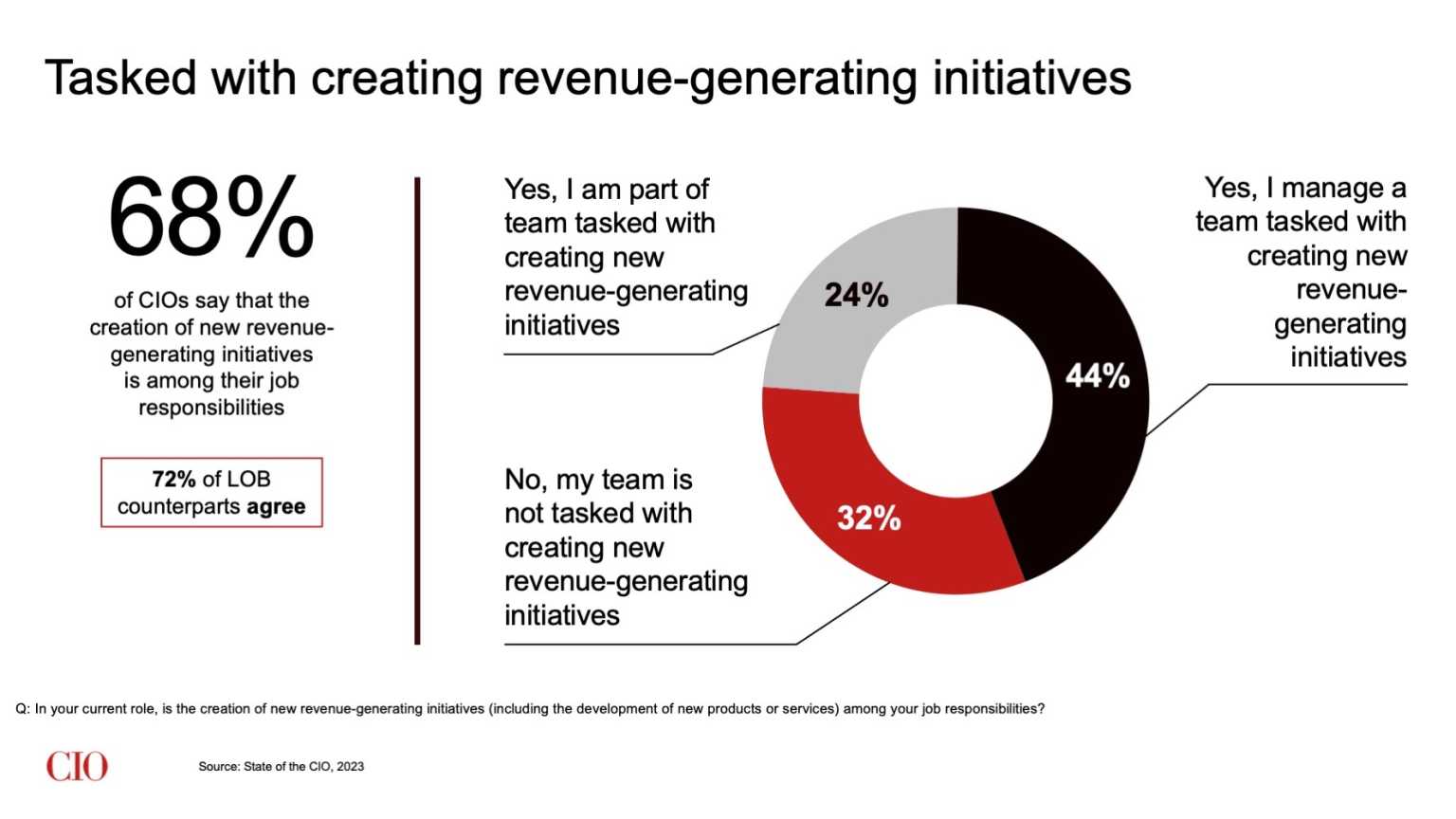A CDO Call To Action: Stop Hoarding Data—Save The Planet

Many of the implications of rampant data hoarding are reasonably well
known—including the potential compliance and privacy risks associated with
storing petabytes of data you know absolutely nothing about. For many
companies, "don’t ask, don’t tell" seems to be the approach when it comes to
ensuring compliant management of their dark data—or at the very least,
ignoring dark data represents a business risk many compliance officers seem
willing to take. Other implications on the cost of storing dark data, or the
potential value that could be unlocked by operationalizing it, are also often
discussed. For many CDOs, the motivation to store troves of data that may
never get used is a form of FOMO, where the fear of being unable to support a
future request for new analytical insights outweighs the cost of data storage.
In these situations, the unwillingness of many CDOs to apply methods to
measure the business value of data is a primary enabler of data hoarding,
where the idea that "we might need it someday" is sufficient to drive millions
in annual revenues for cloud service providers.
Google, Microsoft, Amazon, Meta Pledge to Make AI Safer and More Secure
Meta said it welcomed the White House agreement. Earlier this week, the
company launched the second generation of its AI large language model, Llama
2, making it free and open source. "As we develop new AI models, tech
companies should be transparent about how their systems work and collaborate
closely across industry, government, academia and civil society," said Nick
Clegg, Meta's president of global affairs. The White House agreement will
"create a foundation to help ensure the promise of AI stays ahead of its
risks," Brad Smith, Microsoft vice chair and president, said in a blog post.
Microsoft is a partner on Meta's Llama 2. It also launched AI-powered Bing
search earlier this year that makes use of ChatGPT and is bringing more and
more AI tools to Microsoft 365 and its Edge browser. The agreement with the
White House is part of OpenAI's "ongoing collaboration with governments, civil
society organizations and others around the world to advance AI governance,"
said Anna Makanju, OpenAI vice president of global affairs.
UN Security Council discusses AI risks, need for ethical regulation

During the meeting, members stressed the need to establish an ethical,
responsible framework for international AI governance. The UK and the US have
already started to outline their position on AI regulation, while at least one
arrest has occurred in China this year after the Chinese government enforced
new laws relating to the technology. Malta is the only current non-permanent
council member that is also an EU member state and would therefore be governed
by the bloc’s AI Act, the draft of which was confirmed in a vote last month.
Although AI can bring huge benefits, it also poses threats to peace, security
and global stability due to its potential for misuse and its unpredictability
— two essential qualities of AI systems, Clark said in comments published by
the council after the meeting. “We cannot leave the development of artificial
intelligence solely to private-sector actors,” he said, adding that without
investment and regulation from governments, the international community runs
the risk of handing over the future to a narrow set of private-sector
players.
How to Choose Carbon Credits That Actually Cut Emissions
Risk is the biggest driver in business and — with trillions of dollars in
annual climate-related costs and damage – the climate crisis is fast becoming
a business crisis. Corporations must act now to minimize losses, illustrate
meaningful climate action to shareholders and comply with fast-approaching
climate regulations. Carbon credits are an important approach to scaling
climate action globally and are a fast-growing strategy for delivering on
corporate ESG goals. While these offsets are part of nearly every scenario
that keeps global warming to 1.5 degrees Celsius, legacy carbon markets lack
broad public trust: Impactful carbon solutions require clear guidelines and
proven, verifiable data. ... This is an all-hands-on-deck moment. We must
engage proven, reliable, and equitable methods to meet what may be the
greatest threat to the future of humanity and the planet we inhabit. Carbon
credits, when implemented responsibly and at scale, can be a very effective
tool for humanity to use in the fight to limit the damages from climate
change.
BGP Software Vulnerabilities Overlooked in Networking Infrastructure

At the heart of the vulnerabilities was message parsing. Typically, one would
expect a protocol to check that a user is authorized to send a message before
processing the message. FRRouting did the reverse, parsing before verifying.
So if an attacker could have spoofed or otherwise compromised a trusted BGP
peer's IP address, they could have executed a denial-of-service (DoS) attack,
sending malformed packets in order to render the victim unresponsive for an
indefinite amount of time. ... "Originally, BGP was only used for large-scale
routing — Internet service providers, Internet exchange points, things like
that," dos Santos says. "But especially in the last decade, with the massive
growth of data centers, BGP is also being used by organizations to do their
own internal routing, simply because of the scale that has been reached," to
coordinate VPNs across multiple sites or data centers, for example. More
than 317,000 Internet hosts have BGP enabled, most of them concentrated in
China (around 92,000) and the US (around 57,000). Just under 2,000 run
FRRouting — though not all, necessarily, with BGP enabled — and only around
630 respond to malformed BGP OPEN messages.
How IT leaders are driving new revenue

CIOs who are driving new revenue are: Delivering technologies designed to meet
specific business outcomes. For example, Narayaran has seen CIOs focus their
teams on creating applications designed not merely on high availability and
reliability but on hitting very specific business goals — such as enabling
on-time deliveries to its customers. Unlocking data’s potential. Narayaran
says he has also seen CIOs make big plays with their data programs, investing
in the technology infrastructure needed to bring together and analyze data
sets to create new services or products and drive business objectives such as
improved customer retention and customer stickiness. Co-creating with their
business unit colleagues. Notably, Narayaran says CIOs are approaching their
business unit colleagues with such proposals. “CIOs [are saying], ‘Here’s an
opportunity. We have this data, and we can make this data do this for you,’
and they then bring that to life. And if they say, ‘This is what we have and
this is what we can do,’ then the business, too, can come up with new
ideas.”
Data centers grapple with staffing shortages, pressure to reduce energy use

A consistent issue for the past decade, attracting and retaining new talent
will continue to challenge data center leaders, according to Uptime. About
two-thirds of survey respondents said they have “problems recruiting or
retaining staff,” but the trend appears to be stabilizing as it hasn’t
increased over last year’s data. According to the report: More than one third
(35%) of respondents say their staff is being hired away, which is more than
double the 2018 figure of 17%. And many believe operators are poaching from
within the sector, with 22% of respondents reporting that they lost staff to
their competitors. Staffing challenges are highest among operations management
staff and those specializing in mechanical and electrical trades, as well as
with junior level staff. “It's been challenging the data center industry for
about a decade. It has been escalating in recent years. Our survey data this
year suggests that it may, at least this year, not be getting worse, maybe
stabilizing. And poaching is a problem of people who do get qualified
applicants into jobs – they do find them hired away,” said Jacqueline Davis,
research analyst at Uptime Institute.
Why API attacks are increasing and how to avoid them

First, exposing APIs to network requests significantly increases the attack
surface, says Johannes Ullrich, dean of research at the SANS Technology
Institute. “An attack no longer needs access to the local system but can
attack the API remotely,” he says. Even worse, APIs are designed to be easy to
find and use, Ullrich says. They’re “self-documenting” and are typically based
on common standards. That makes them convenient for developers, but also prime
targets for hackers. Since APIs are designed to help applications talk to one
another, they often have access to core company data, such as financial
information or transaction records. It’s not only the data itself that’s at
risk. The API documentation can also give outsider insights into business
logic, says Ullrich. “This insight may make finding weaknesses in the business
process easier.” Then there’s the quantity issue. Companies deploying
cloud-based applications no longer deploy a single monolithic application with
a single access point in and out.
Journey to Quantum Supremacy: First Steps Toward Realizing Mechanical Qubits

Research and development in this field are growing at astonishing paces to see
which system or platform outruns the other. To mention a few, platforms as
diverse as superconducting Josephson junctions, trapped ions, topological
qubits, ultra-cold neutral atoms, or even diamond vacancies constitute the zoo
of possibilities to make qubits. So far, only a handful of qubit platforms
have demonstrated to have the potential for quantum computing, marking the
checklist of high-fidelity controlled gates, easy qubit-qubit coupling, and
good isolation from the environment, which means sufficiently long-lived
coherence. ... The realization of a mechanical qubit is possible if the
quantized energy levels of a resonator are not evenly spaced. The challenge is
to keep the nonlinear effects big enough in the quantum regime, where the
oscillator’s zero point displacement is minuscule. If this is achieved, then
the system may be used as a qubit by manipulating it between the two lowest
quantum levels without driving it in higher energy states.
ChatGPT Amplifies IoT, Edge Security Threats

ChatGPT and its ilk are rapidly appearing integrated or embedded in commercial
and consumer IoT of all types. Many imagine AI models to be the most
sophisticated security threat to date. But most of what is imagined is indeed
imaginary. “Now, if an actual AI emerges, be very worried if the kill switch
is very far away from humans,” says Jayendra Pathak, chief scientist at
SecureIQLab. He, like others in security and AI, agree that the chances of an
actual general artificial intelligence developing any time soon are still very
low. But as to the latest AI sensation, ChatGPT, well that’s another kind of
scare. “ChatGPT poses [insider] threats -- similar to the way rogue or
‘all-knowing employees’ pose -- to IoT. Some of the consumer IoT
vulnerabilities pose the same risk as a microcontroller or microprocessor
does,” Pathak says. In essence, ChatGPT’s potential threats spring from its
training to be helpful and useful. Such a rosy prime directive can be very
harmful, however.
Quote for the day:
"No man can stand on top because he is
put there." -- H. H. Vreeland
No comments:
Post a Comment